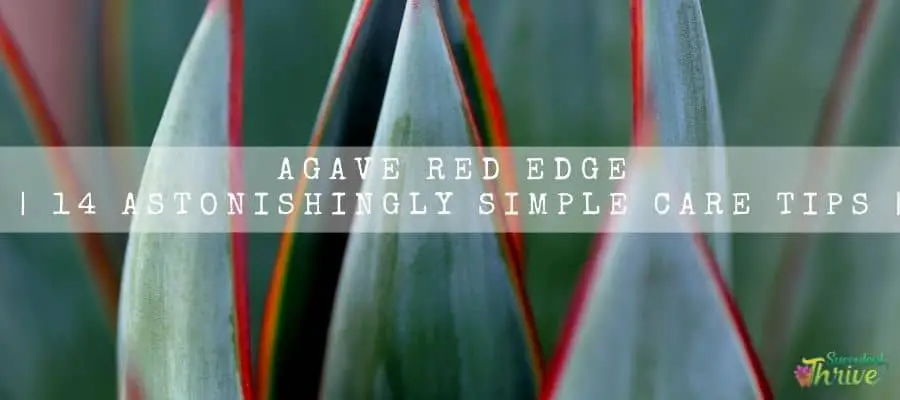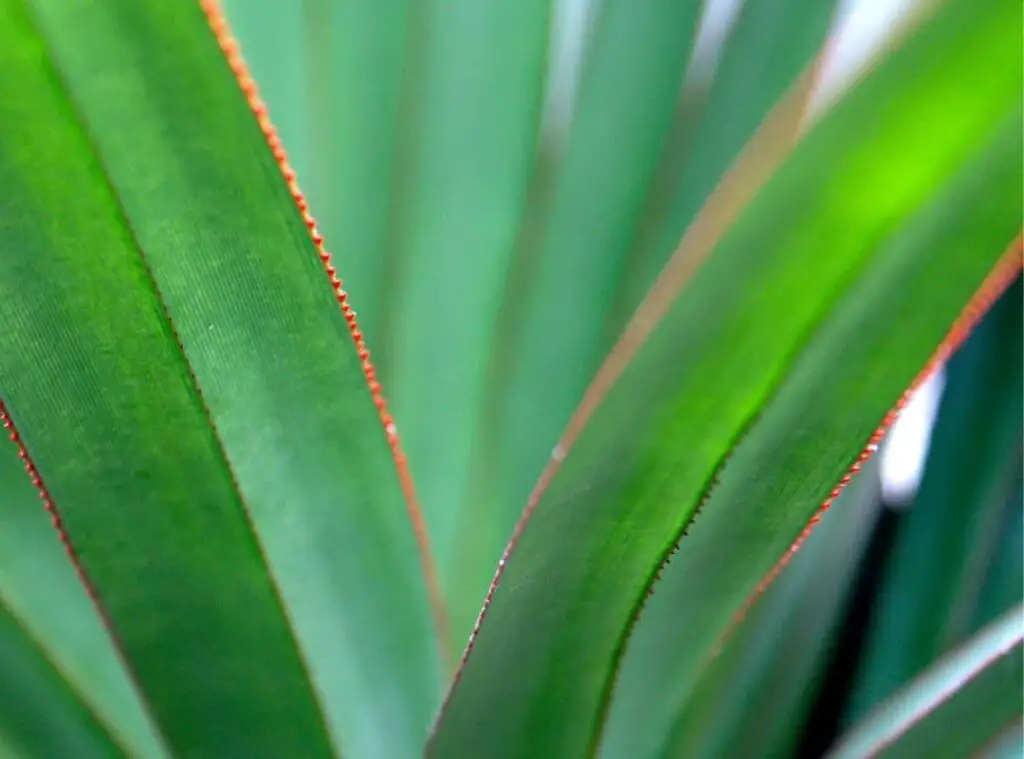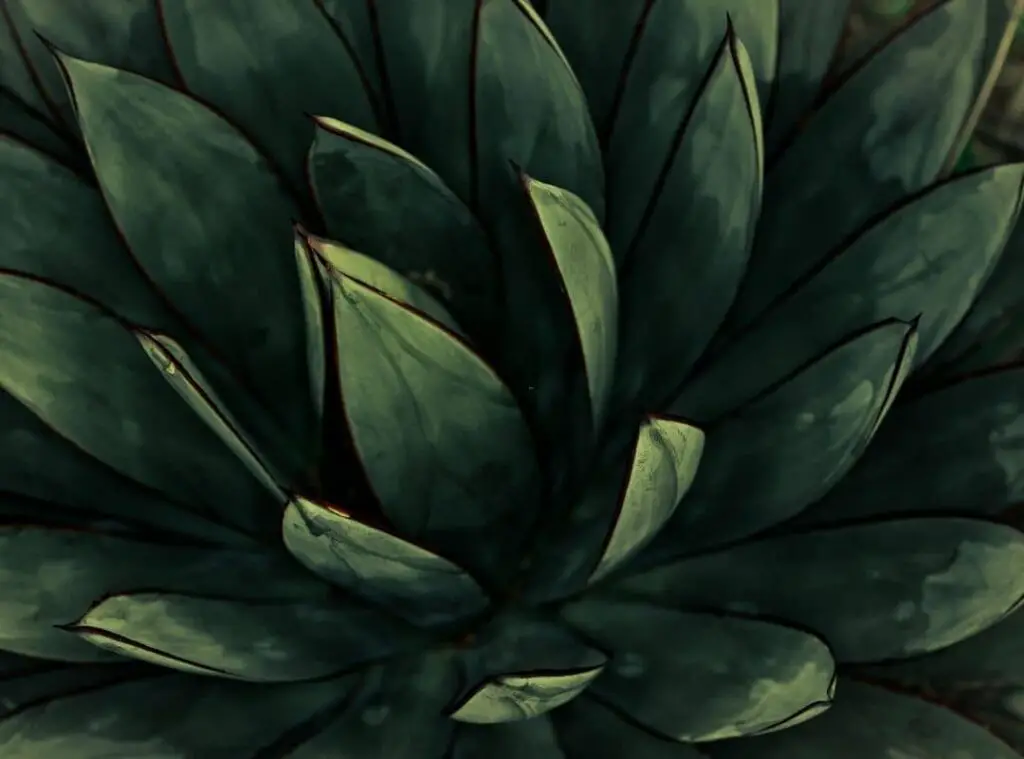If you are very busy and cannot spare a lot of time for gardening, Agave red edge would be a perfect fit for you.
Agave red edges could perform well if you manage to provide their basic right growing conditions fulfilled. All they need is sufficient sunlight levels, a well-draining soil mix and adequate amount of water.
Agave red edge is famous for its blue-green leaves with red margin. They are hailing from Mexico and from North America, and they are endemic plants there.
These plants are generally resistant to pests. Agave red edge is a fabulous plant, and it is a structural hybrid as well. Due to their spines, I would recommend growing them away from walkaways.

How do I identify agave red edge?
You could use the Agave red edge’s leaves to identify them. They would usually produce leaves in blue-green colors with finely toothed margins in golden and in red ribbons.
They are smooth and of smooth margins as well. In addition to that Agave red edge usually form in rosettes.
When you expose them to bright sunlight, they could become more vibrant with their leaves in gold and in red colors.
Size of the plant
In terms of the Agave red edge, they would rise to 1-2 ft. in height and 2-3 ft in width.
Growth rate
Agave red edges are renowned as slow growing succulents.
One look care guide
| Botanical Name | Agave red edge |
| Common Name | Agave red edge |
| Plant Type | Succulent |
| Mature Size | 1-2 ft. in height and 2-3 ft in width. |
| Sun Exposure | Full sunlight to partial sunlight |
| Soil Type | Well-draining sandy |
| Soil pH | acidic or neutral |
| Hardiness Zones | Zone 9b-11b |
| Native Area | Mexico and North America |
| Toxicity | Mildly Toxic |
| Average price | 10 USD |
How do you take care of the agave red edge?
Light Requirement
Agave red edges would survive in a place where they can gain adequate sunlight levels.
To elaborate further on this, you need to grow them in a place where they can gain bright sunlight for six to eight hours and partial shade for the rest of the day.
If the plant is going through intense summer conditions, you may grow them in partial shade.
However, when you expose them for outdoor full sunlight conditions from indoor lighting conditions, make sure that you slowly acclimate them to full sunlight.
Unless chances are that they could be traumatized due to the drastic changes in the weather conditions. Be mindful of that!
Temperature and humidity
Agave red edge would prefer to grow in a temperature range around 18 degrees Celsius – 24 degrees Celsius.
Make sure that you do not expose them for drastic fluctuations in the temperatures. Further you may consider misting them once every fortnight so that you could control the humidity level.
In fact, Agave red edge would prefer to have a low humidity level. If you expose them to high humidity levels, that could lead to rot etc.
Is it cold hardy?
Agave red edge are not cold hardy plants. Instead, they are extremely drought tolerant. You should make the necessary arrangements to safeguard these plants to protect from colder weather conditions.
USDA Hardiness Zone
This plant prefer to live in Zone 9b-11b (Minimum 25° F – 50 ° F | -3.9° C – 10 ° C)
Watering Requirement
Agave red edge can survive in drought conditions as aforesaid and their water requirement is very minimal just like the rest of other succulents.
Literally you need to consider watering them when their soil is dry or if they lack rainfall for a prolonged period. Having said that, you need to water them for a few days when you freshly plant them in a soil mix.
Later, you may water them once every two weeks depending on the weather conditions, soil condition.
Literally you may water these plants less often in winter conditions and more often in summer as aforesaid.
No matter what, you should make sure that you do not over water them at any given point of time. Further you need to always ascertain that soil is dry and only then you may resume watering them.
If by any chance you end up over watering the Agave red edge plants, it could create brown spots.
Consequently, they will start to shed their leaves too. On the other hand, if you come across any wrinkled or curly leaves, that is an indication of under watering.
Moreover, when watering, you may do it either in the early morning or in the late evening when the temperatures are a little colder.
Soil Requirement Type / pH
It is vital that you provide a right soil mix for the Agave red edge to thrive well. It is a crucial factor when taking care of the Agave red edge plants.
They would prefer to have a soil mix which has excellent drainage.
Having said that, they are fond of growing in rocky or in a sandy soil mix. If you fail to provide a soil mix which is not well draining, it will lead to root rot.
It could be so dangerous since it could be fatal for these plants. Ideal pH of their soil mix should be slightly acidic or neutral.
Pot size Potting and Repotting
Agave red edge comprises a root system which is shallow. As such you could grow them in shallow pots since they do not require a lot of soil.
Further, you could grow them in a clay pot or in a terracotta pot as the excess moisture could evaporate faster in those materials. In addition to that, make sure that it has draining holes as well.
Best recommended is to repot them once every two years. Having said that, the ideal season to repot them is in spring or in summer.
When repotting, you need to go ahead with a fresh soil mix. You may continue with the general practice when repotting them.

Where to Plant
You should grow the Agave red edge in a slightly acidic, sandy, or gravelly soil mix. Further ensure that it is a bright sunny spot too.
Apart from that, you need to bring them indoors during winter conditions to protect them from frost conditions. Ideally you can place them on a patio or on a balcony during summer conditions.
Their spines could harm you when you are interacting with them. Hence, I need to grow them away from pathways.
Fertilizer and time of year
Agave red edge are not dependent on fertilizers a lot. Having said that, if you provide them with extra nutrients, it would be beneficial for the plant’s growth as well as for the health of it.
In terms of the frequency of the feeding, you could do it once every forty days. Moreover, you could proceed with succulent plant food when feeding them.
Dormancy
Agave plants in general go into dormancy during winter. During this time, you will see how they have ceased the growth of the plant.
Literally they will be in a relaxing mode when they are dormant. During dormancy, you could skip feeding them and watering them.
Other plants Pairs Well With
Agave red edges would pair well with cactus and Ocotillo.
Can be toxic to pets
They are mildly toxic for pets. They in fact contain a mildly toxic sap. And they could create symptoms such as swelling, blisters etc.
Common bugs and illnesses
Agave red edge are generally resistant to pests and diseases. Having said that, there could be pests’ invasions from agave snout weevils as they usually tend to lay eggs there.
That will ultimately attribute the plant to collapse. If you come across such a situation, you need to immediately isolate them and stop spreading them to the rest of other plants.
In addition to that, there are other bug types such as mealybugs which could invade these plants.
Chances are that they would come across dropping leaves also. That could be an indication of agave snout weevil attack.
Having said that, dropping leaves could be an indication of over watering. further ensure that you do not leave the plant’s roots to be in waterlogged situations as it could lead to root rot as well.
Apart from that, over watering could lead to the yellowing of the leaves as well. In addition to that it could be a sign of lack of sunlight as well.
Low lighting levels could cause them to lose their vibrancy in their colors too. Whenever you come across such a situation, ensure that you immediately move them to a bright sunny spot.
I advise conducting regular check ups on your plants so that you could see if there are any early signs of any disease.
In fact, the sooner you identify these issues the better it would be, and you could avoid further repercussions in the plants.
Special Care tips
Agave red edges could be easily maintained as aforesaid. In fact, they are ideal for forgetful gardeners.
However, you should fulfill their necessities such as growing them in slightly acidic sandy or gravelly well-draining soil mix.
Moreover, you need to expose them for full sunlight to partial sunlight. Further avoid exposing them to frost conditions.
Ideally you need to bring it to a frost-free location. Further, you need to water them appropriately as aforesaid.

How to propagate agave red edge
Agave red edges which are matured form pups around their base of the plant. You could simply use them to multiply these plants.
If you use their pups to propagate, it will consequently help the mother plant getting overcrowded too. You need to ideally wait until those pups become at least one inch wide.
- To start off, you simply have to loosen the soil around the pup.
- Next you need to look for the root which is binding this plant to the mother plant.
- Once you locate it, you need to snip it off whilst using a sharp trowel without harming the pup’s roots though.
- Take off the pups carefully making sure that it has many roots intact.
- Next you could place them in a shady area where they will get proper ventilation as well.
- That will consequently allow the cut edges to develop callous.
- Once they become calloused, you need to plant them in a succulent soil mix filled with a small container which has sufficient draining holes.
- As the next step, you need to moisten the soil lightly and locate them somewhere where they can gain bright sunlight and heat.
Moreover, if you realize the top layer of the soil is dry, you could go ahead and moisten them lightly. You may go ahead and plant them outdoors during a few weeks’ time.
Apart from that you could use the Agave red edge seeds also to propagate them.
- This is relatively an easy process. you simply have to fill a container with a seed starting mix. (Make sure that it has draining holes.)
- Next you may simply sow those seeds in the top layer of the soil.
- Ensure that you provide sufficient sunlight for them to germinate successfully.
- Next you may place the specimen in a temperature range which is above 70 degrees Fahrenheit.
- You could spot them germinating within a few weeks’ time.
Agave red edge plant benefits
Agave red edges are quite handy to use for decorative containers be it indoors or outdoors. Further you may grow them in beds, borders as well.
Not only that but also you may use them for city gardens, coastal gardens, succulent gardens etc. too.
Conclusion
Before concluding, trust this article was useful for you and I am sure you were amazed by the unique features explained above on this plant.
One more interesting feature of this plant is that they could survive well in urban polluted areas as well. You may consider growing these if you are an exotic gardener too.
They would look wonderful and would beautify the entire space you grow them. So hurry up, grab your Agave red edge and start growing.
Read Next : Aloe Crosby’s Prolific | 14 Care Facts You Would Love |
